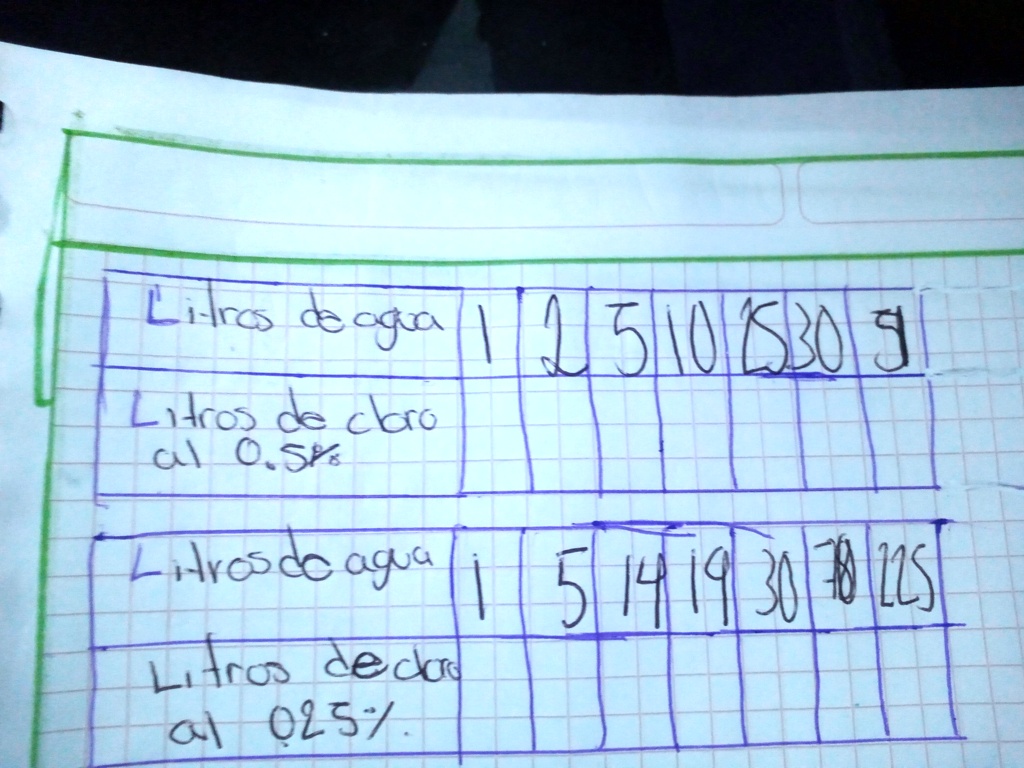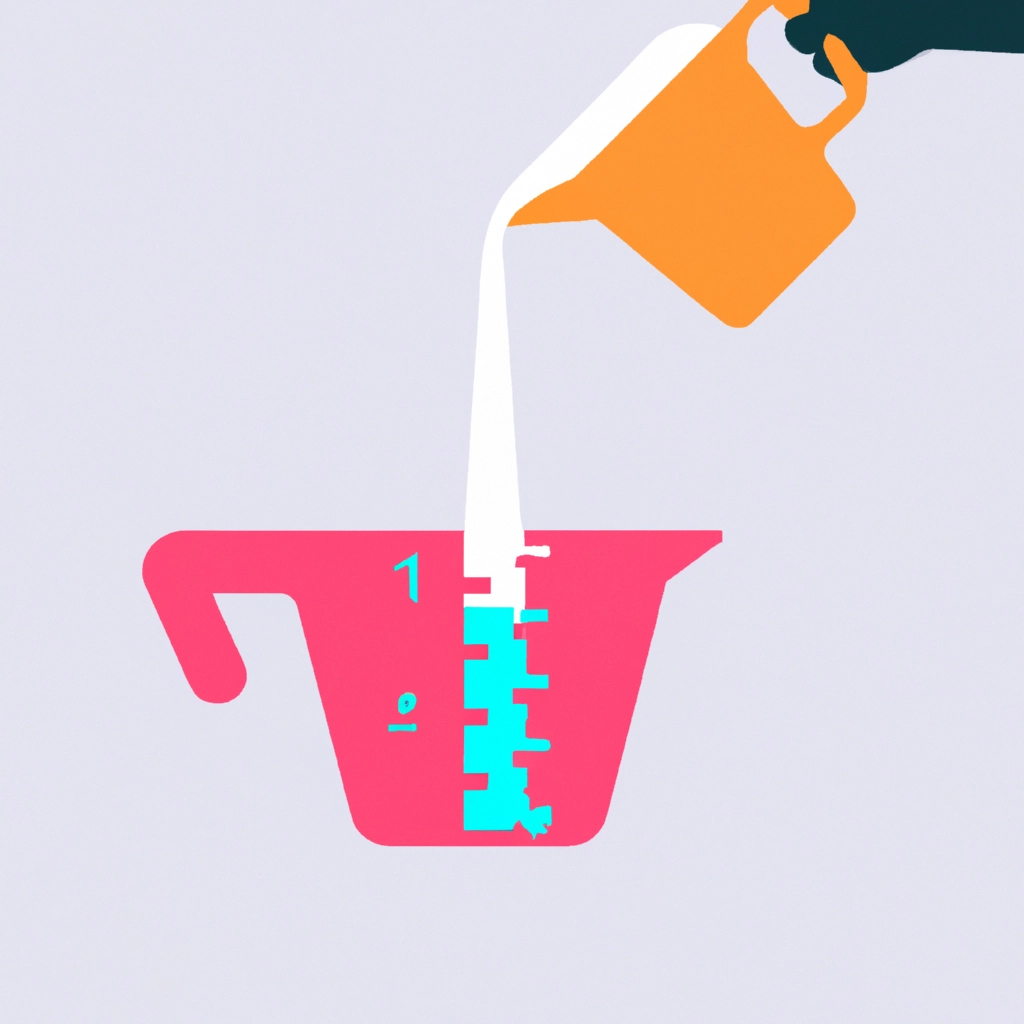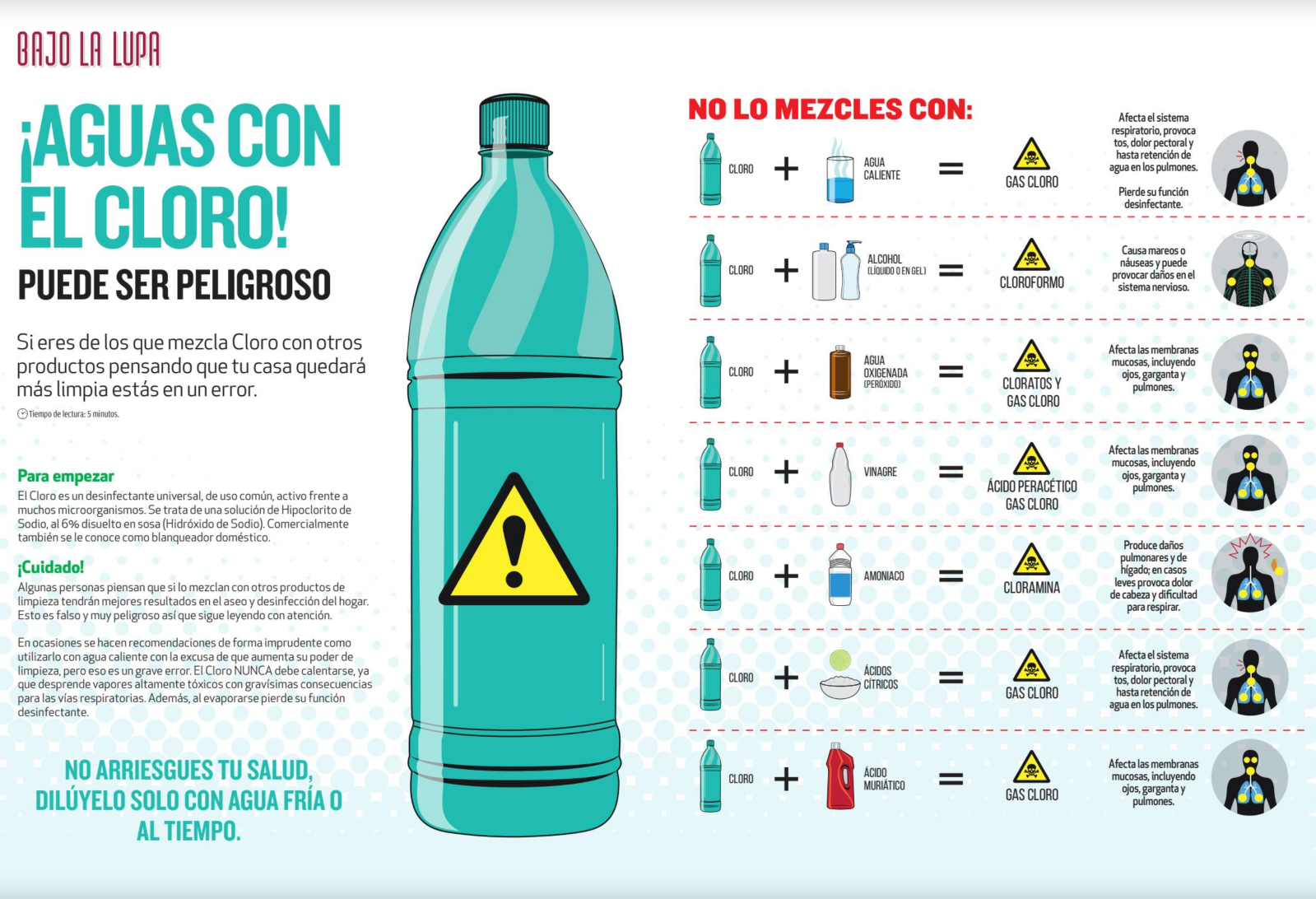Thinking about making your water clean and safe? Knowing how much cleaning agent to put in a large container of liquid, say a thousand liters, is a common question, and getting it right is quite important. Many folks wonder about the exact portion of sanitizing stuff for their water supply, whether it's for home use or perhaps a storage tank. You know, getting the right amount helps keep things healthy.
Having a good, dependable supply of clean liquid is, you might say, a basic need for most people. When you're dealing with a sizable quantity, like a thousand liters, making sure it's free from tiny, unseen invaders becomes a real concern. This isn't just about making it look clear; it's truly about getting rid of things that could make you or your loved ones feel unwell. So, figuring out the right measure of a cleaning substance is a pretty big deal for keeping your water ready for use.
Now, the answer to how much of this cleaning agent you should add isn't just one simple number, as a matter of fact. It actually shifts depending on a few key things, like what your liquid is for, where it came from, and even the type of cleaning product you have on hand. We're going to walk through what you need to think about to help you make a good choice for your specific situation, just a little bit at a time.
- Glorilla Husband
- Common Rapper And Jennifer Hudson
- Fbi Most Wanted Cancelled
- Do Meredith And Thorpe Get Married
- Florida Teens
Table of Contents
- ¿Por Qué Es Importante Limpiar Tu Provisión de Agua?
- Cuánto Cloro Poner - ¿Qué Considerar Antes de Echar?
- Tipos de Cloro Para Tu Agua
- ¿Cómo Calcular Cuánto Cloro Necesita Tu Agua?
- ¿Es Seguro Ponerle Cloro a 1000 Litros de Agua?
- Pasos Sencillos Para Echar Cuanto Cloro Se Necesita
- Problemas Comunes y Cómo Solucionarlos
- Mantenimiento y Cuánto Cloro Después
¿Por Qué Es Importante Limpiar Tu Provisión de Agua?
Making your water clean, especially when you have a good bit of it, is a pretty big deal for staying well. You see, water can carry all sorts of tiny, living things that you can't even spot with your eyes. These little creatures, which are basically germs, could cause some serious tummy troubles or other health issues if you happen to drink them. So, putting in a cleaning substance, like chlorine, is a way to get rid of those unwanted guests, making your liquid supply much safer to use. It’s a simple step, really, that helps protect everyone who might come into contact with it, and that’s quite a relief.
The cleaning agent, when added to your water, actually goes to work by attacking those harmful bits. It breaks them down, stopping them from causing any problems. This process, often called disinfection, is a tried and true way to make sure your water is fit for drinking, washing, or whatever else you need it for. It’s like giving your water a good scrub, but on a microscopic level, you know? It helps give you peace of mind, knowing that your thousand liters of water are ready for whatever you have in mind.
Cuánto Cloro Poner - ¿Qué Considerar Antes de Echar?
When you're trying to figure out the right portion of cleaning agent for your 1000 liters of water, there are a few things that truly make a difference. First off, think about where your water comes from. Is it from a well, a public system, or maybe a rainwater collection? Water from different places will have different levels of natural stuff in it, and that can change how much cleaning agent you need. A bit of murky water will typically ask for more cleaning power than water that looks crystal clear, for example.
- Claire Dutton In 1883
- Alexei Mentzer Judge Judy Grandson
- Four Ingredients For Natural Mounjaro
- Did Shaq Have A Stroke
- Alex Morgan Daughter Charlie
Next, consider what you're planning to use this treated liquid for. Are you going to drink it? Or is it for something else, like filling a small pond or just for washing things? Water meant for drinking needs a very specific level of cleanliness, a bit more careful, you know? If it’s just for other uses, the requirements might be slightly different. The aim for the final cleanliness level really guides how much of the cleaning stuff you should be adding to your thousand liters.
The kind of cleaning product you have also plays a big part in determining cuánto cloro se le echa a 1000 litros de agua. There are different forms, like liquid bleach, little granules, or even tablets. Each one has a different strength, or concentration, of the active cleaning ingredient. So, you can’t just use the same amount of a very strong product as you would for a weaker one. It’s a bit like baking; you wouldn't use the same measure of flour as you would for a pinch of salt, would you? Knowing the strength of your product is really important for getting the measure just right.
Also, the temperature of your water and how long the cleaning agent will be in contact with it can have an effect. Warmer water, for instance, sometimes helps the cleaning process move along a little quicker. And giving the cleaning agent enough time to do its job is key. You can't just put it in and expect instant results; it needs a period to work its magic. So, these environmental factors, in a way, also shape the ideal amount of cleaning substance for your thousand liters.
Tipos de Cloro Para Tu Agua
When we talk about adding a cleaning substance to water, we're usually thinking about a few common forms. One of the most familiar is liquid bleach, the kind you might use for laundry. This is typically sodium hypochlorite, and it comes in different strengths, often around 5% to 8% for household use. It’s pretty easy to measure out, and it mixes into water without much fuss. For a thousand liters, you'd be looking at a certain portion of this liquid, depending on its strength, of course.
Then there are granular forms, often called calcium hypochlorite. This comes as little bits or pellets and is usually much stronger than liquid bleach, sometimes containing 65% or even 70% of the active cleaning ingredient. Because it's so much more potent, you need a much smaller amount of this stuff to get the same cleaning effect in your 1000 liters. You have to be a bit more careful handling it, as it's a stronger chemical, but it's very effective for treating larger water volumes.
Some people also use cleaning tablets, which are often a compressed form of calcium hypochlorite or another similar compound. These are handy because they're pre-measured in a way, making it simple to drop one or two into a specific amount of water. For a large container like 1000 liters, you'd likely need several tablets, or perhaps a larger, specialized tablet if available. Each type has its own pros and cons, so picking the right one depends on what’s easiest and most effective for your specific situation, you know?
¿Cómo Calcular Cuánto Cloro Necesita Tu Agua?
Figuring out the exact portion of cleaning agent for your 1000 liters of water often comes down to a measurement called "parts per million," or PPM. This tells you how much of the cleaning substance is in the water once it's mixed. For making drinking water safe, people often aim for a target of around 0.5 to 1 PPM of residual cleaning agent after a certain contact time. If you're trying to really clean up very dirty water, you might go for a higher initial PPM, perhaps 5 or even 10, to give it a good shock treatment, so to speak.
Let's consider a simple example for calculating cuánto cloro se le echa a 1000 litros de agua. If you're using regular household liquid bleach that is, say, 5% active ingredient, you'd need about 20 milliliters of this bleach to get roughly 1 PPM of cleaning agent in 1000 liters of water. So, if you wanted to reach a target of 2 PPM, you'd simply double that amount to 40 milliliters. It’s a pretty straightforward idea once you know the strength of your product and your target PPM, actually.
The general idea for calculating is this: you need to know the concentration of your cleaning product and the volume of water you're treating. A common rule of thumb is that to get 1 PPM in 1000 liters of water, you would need about 10 grams of a 100% pure cleaning substance. Since most products aren't 100% pure, you adjust for that. For instance, if your granular product is 65% active, you'd need a bit more than 10 grams to account for the other stuff in it. It’s a bit of simple math, but it helps you get a good, safe level of cleanliness for your large water supply.
¿Es Seguro Ponerle Cloro a 1000 Litros de Agua?
When you're working with cleaning agents, especially in larger amounts for a big container like 1000 liters, safety is a really important thing to keep in mind. The cleaning substances themselves can be quite strong, so you don't want to get them on your skin or in your eyes. It’s a good idea, you know, to put on some protective gloves and perhaps some eye protection before you start measuring and mixing. Also, make sure you're in a place with good air flow, so any fumes don't build up. A well-ventilated area is key when you are figuring out cuánto cloro se le echa a 1000 litros de agua.
Putting in too much of the cleaning agent can also cause some issues. While it's great for getting rid of germs, an excessive amount can make your water taste and smell very strong, a bit like a swimming pool. It can also be irritating if you drink or bathe in it. So, while you want to make sure your water is clean, you don't want to overdo it. That's why getting the calculation right is so important; it helps you avoid both too little cleaning and too much.
After you've added the cleaning agent and given it time to work, it's a very good idea to test the water. You can get simple test strips that tell you the level of residual cleaning agent in the water. This helps confirm that you've put in enough to do the job, but not so much that it's unpleasant or unsafe. If the level is too high, you might need to let the water sit for a longer period or even aerate it a bit to help some of the cleaning agent dissipate. It's all about finding that good balance for your thousand liters of water.
Pasos Sencillos Para Echar Cuanto Cloro Se Necesita
Getting the right amount of cleaning agent into your 1000 liters of water doesn't have to be a complicated process. First, you'll want to have your calculated portion of cleaning agent ready. Measure it out carefully, using a clean measuring cup or spoon that you don't use for food. This step is pretty important to make sure you're adding the correct amount, so, you know, take your time with it.
Next, it's best to mix the cleaning agent into a smaller bucket of water first, rather than pouring it directly into the large container. This helps it dissolve and spread out more evenly. Stir this smaller mixture well. Once it’s thoroughly mixed, you can then add this diluted solution to your main 1000-liter water supply. This way, the cleaning agent gets distributed throughout the whole volume of water much more effectively, which is actually quite helpful for consistent cleaning.
After you've added the cleaning solution to your thousand liters, give the water a good stir if you can, or let it circulate if it's in a system with a pump. Then, you need to let it sit for a specific period, often around 30 minutes to an hour. This "contact time" allows the cleaning agent to do its work and get rid of any harmful bits. After this waiting period, you should perform a test to see if the cleaning agent level is where it should be. If it is, then your water is ready to use, and you've successfully managed cuánto cloro se le echa a 1000 litros de agua.
Problemas Comunes y Cómo Solucionarlos
Sometimes, even with the best intentions, things don't go exactly as planned when you're cleaning your water. One common issue is that the water might end up with a very strong smell or taste, a bit like a swimming pool. This usually means you've put in a little too much cleaning agent. If this happens, don't worry too much. You can let the water sit uncovered for a while, perhaps a few hours or even overnight. The excess cleaning agent will naturally dissipate into the air. You can also try stirring the water vigorously or pouring it back and forth between two clean containers to help speed up the process, you know?
On the flip side, you might find that your water still looks a bit cloudy, or perhaps a test shows that there isn't enough cleaning agent present. This suggests you might not have added enough, or the water was particularly dirty to begin with. In this situation, you can carefully add a small, additional portion of the cleaning agent, mix it in, and then let it sit for another contact period before re-testing. It’s a process of adjustment, basically, to get it just right for your thousand liters of water.
Dealing with different water sources can also present unique challenges. Water from a natural spring or a well might have more natural organic matter or minerals, which can use up some of the cleaning agent before it even starts killing germs. In these cases, you might need a slightly higher initial dose of cleaning agent. It's always a good idea to know a little bit about your water source, as it helps you anticipate how much cleaning power you'll need. This way, you can adjust your approach to cuánto cloro se le echa a 1000 litros de agua for the best results.
Mantenimiento y Cuánto Cloro Después
If you're storing your 1000 liters of water for a longer period, like in a tank for emergency use, you'll want to think about ongoing maintenance to keep it clean. Over time, the cleaning agent you initially added will slowly break down and become less effective. This means you'll need to re-dose the water every so often to keep it safe. The exact frequency depends on things like the temperature of the storage area and how well the tank is sealed, but typically, checking and re-dosing every few months is a good idea, more or less.
To re-dose, you would follow a similar process to your initial treatment. First, test the water to see what the current level of cleaning agent is. If it's too low or completely gone, then you'll add a smaller amount of cleaning agent to bring it back up to your desired level, perhaps 0.5 PPM for continuous storage. It’s a bit like topping up your car's fluids; you just add what's needed to maintain the right level. This helps ensure your stored water remains ready for use whenever you might need it, and that's really important for peace of mind.
Keeping an eye on the water's clarity and smell is also a simple way to know if it needs another dose. If it starts to look cloudy again or develops an odd smell, that’s a pretty good sign it’s time to add more cleaning agent. This regular checking and re-application of cleaning substance is key for long-term water safety, especially for such a significant volume as 1000 liters. It helps you stay on top of the cleanliness of your water supply, ensuring it stays in good shape for when you need it.
So, when you're thinking about treating a thousand liters of water, remember that getting the right amount of cleaning agent is a careful balance. It involves knowing your water, picking the right product, and doing a bit of simple calculation. Always put safety first, and make sure to test your water after treatment to confirm it's just right. With a little care, you can ensure your large water supply is clean and ready for whatever you need it for.
- Alexei Mentzer Judge Judy Grandson
- De Donde Son Los Papas De Ariana Grande
- Corey And Leah Now
- Brad Pitts Friend
- Buffalo Wild Wings Allyou Can Eat


